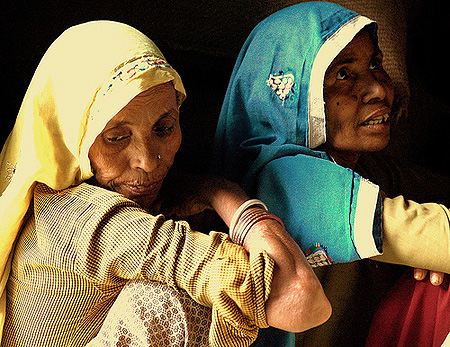
Well, it turns out microfinance institutions and microenterprises may very well be.
In an interesting reversal of fortunes, small, flexible and locally connected microfinance institutions seem to be fairing better than their larger commercial counterparts in the current economic climate. Due in large part to flexible business models, locally connected operations (microcreditors tend to know their customers much better), low exposure to the hazy world of high-flying finance, and an attractive product, microfinance institutions are flourishing all over the world.
By lending small amounts to poor people with no traditionally defined credit-worthiness, microfinance institutions are keeping the lower tiers of the world economy afloat, even thriving in parts.
Recent studies have shown that not only have microfinance institutions outperformed their traditional counterparts in Colombia, Bolivia and Peru in the past decade, but they are becoming increasingly important players in more developed countries as well, including the United States. Grameen Bank’s recent successes in Queens, New York, attest to the power of an institution that takes the needs of the poor as its conceptual and operational core. Indeed Muhammad Yunus, winner of the 2006 Nobel Peace Prize, and founder of Grameen Bank, has argued that this recession is a great opportunity to redesign the system to be more receptive to the needs of the masses and not just the lucky few.
Microfinance institutions, often in partnership with umbrella-NGOs like Kiva, are proving that on a practical level such a transformation is already taking place. Not only has Grameen, and several other larger institutions been profitable for decades, they are also proving that in times of crisis, it actually pays to lend to those that are likely to suffer the most.
Although the exchange rate problem (where loans in local currencies are tied to the dollar, for example, and can balloon in weight as the local currency collapses) has hit profit margins in these institutions, they tend to be able to make up for it by the sheer number of loans that they give out.
As the recession deepens and as traditional banks stop lending, the pool of potential customers for banks like Grameen or HOPE Ukraine expands rapidly. In Ukraine, for example, microfinance thrives even as the national economy teeters near total collapse. As a result, those that are set to get hit the hardest by emptied government coffers and dwindling aid flows are able to access funds that shield them from the worst effects and help them build a more stable future.
The picture is by no means rosy- as unemployment skyrockets even in the developed world and as more and more people go hungry– but it is proof of the fact that even in such crises it may actually pay to be on the side of the ‘little guy’.
For further information, check out our podcast on Kiva and microfinancing.

